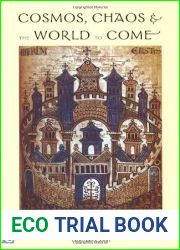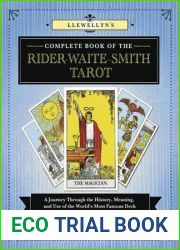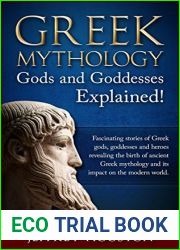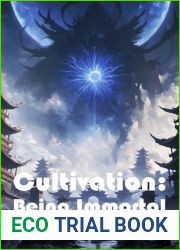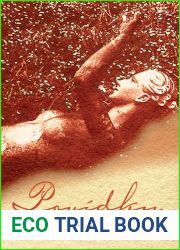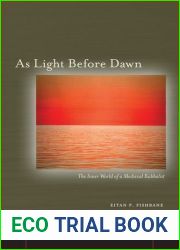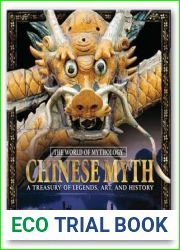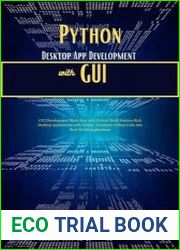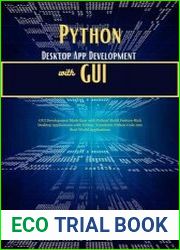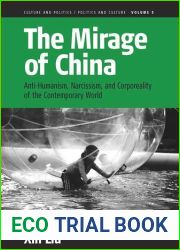
BOOKS - Cosmos, Chaos and the World to Come: The Ancient Roots of Apocalyptic Faith

Cosmos, Chaos and the World to Come: The Ancient Roots of Apocalyptic Faith
Author: Norman Cohn
Year: January 1, 1993
Format: PDF
File size: PDF 34 MB
Language: English

Year: January 1, 1993
Format: PDF
File size: PDF 34 MB
Language: English

Cosmos, Chaos, and the World to Come: The Ancient Roots of Apocalyptic Faith In this captivating book, author Norman Cohn takes us on a journey through the ancient worldviews of Egypt, Mesopotamia, and India, exploring the origins of apocalyptic faith and its evolution over time. From the early combat myths that sought to explain the forces of chaos and order, to the emergence of Zoroastrianism and its impact on Jewish thought, Cohn delves deep into the historical context that shaped our understanding of the end times. The book begins by examining the pre-apocalyptic worldview, where the gods were believed to have set the world in order and it was considered immutable. However, this static view was constantly threatened by floods, droughts, famines, plagues, and wars, leading to a sense of anxiety and fear. As the author shows, it was during this period that the concept of an eternal, unchanging cosmos took hold, with the belief that the world would eventually be consumed by chaos. Around 1500 BC, the Iranian prophet Zoroaster introduced a new vision of the future, one in which the world was not static but instead moving towards a conflictless state, free from chaos. According to Zoroaster, the supreme god would ultimately defeat the forces of evil and bring about an absolutely good world. This idea would go on to influence Jewish groups, particularly the Jesus sect, and have incalculable consequences.
Космос, хаос и грядущий мир: древние корни апокалиптической веры В этой увлекательной книге автор Норман Кон проводит нас в путешествие по древним мировоззрениям Египта, Месопотамии и Индии, исследуя истоки апокалиптической веры и ее эволюцию с течением времени. От ранних боевых мифов, которые стремились объяснить силы хаоса и порядка, до возникновения зороастризма и его влияния на еврейскую мысль, Кон углубляется в исторический контекст, который сформировал наше понимание конечных времен. Книга начинается с изучения предапокалиптического мировоззрения, где считалось, что боги привели мир в порядок и он считался непреложным. Однако этой статичной точке зрения постоянно угрожали наводнения, засухи, голод, эпидемии и войны, что приводило к чувству тревоги и страха. Как показывает автор, именно в этот период закрепилась концепция вечного, неизменного космоса с верой в то, что мир в конце концов поглотит хаос. Около 1500 года до нашей эры иранский пророк Зороастр представил новое видение будущего, в котором мир не был статичным, а вместо этого двигался к бесконфликтному государству, свободному от хаоса. Согласно Зороастру, верховный бог в конечном итоге победил бы силы зла и создал абсолютно добрый мир. Эта идея будет влиять на еврейские группы, особенно на секту Иисуса, и иметь неисчислимые последствия.
Cosmos, chaos et monde à venir : les racines anciennes de la foi apocalyptique Dans ce livre fascinant, l'auteur Norman Cohn nous emmène dans un voyage à travers les vieilles visions du monde de l'Egypte, de la Mésopotamie et de l'Inde, explorant les origines de la foi apocalyptique et son évolution dans le temps. Depuis les premiers mythes de combat qui cherchaient à expliquer les forces du chaos et de l'ordre, jusqu'à l'émergence du zoroastrisme et de son influence sur la pensée juive, Cohn s'enfonce dans le contexte historique qui a façonné notre compréhension des temps finis. livre commence par une étude de la vision préapocalyptique du monde, où l'on croyait que les dieux avaient mis le monde en ordre et qu'il était considéré comme immuable. Mais ce point de vue statique a été constamment menacé par les inondations, la sécheresse, la famine, les épidémies et les guerres, ce qui a suscité un sentiment d'anxiété et de peur. Comme le montre l'auteur, c'est au cours de cette période que le concept d'un espace éternel et immuable s'est ancré avec la conviction que le monde finira par absorber le chaos. Vers 1500 av. J.-C., le prophète iranien Zoroastre a présenté une nouvelle vision d'un avenir dans lequel le monde n'était pas statique, mais se dirigeait plutôt vers un État sans conflit, exempt de chaos. Selon Zoroastre, le dieu suprême aurait finalement vaincu les forces du mal et créé un monde absolument bon. Cette idée affectera les groupes juifs, en particulier la secte de Jésus, et aura des conséquences incalculables.
cosmos, el caos y el mundo venidero: las antiguas raíces de la fe apocalíptica En este fascinante libro, el autor Norman Cohn nos guía en un viaje por las visiones del mundo antiguas de Egipto, Mesopotamia e India, explorando los orígenes de la fe apocalíptica y su evolución a lo largo del tiempo. Desde los primeros mitos de combate, que buscaban explicar las fuerzas del caos y el orden, hasta la aparición del zoroastrismo y su influencia en el pensamiento judío, Cohn profundiza en el contexto histórico que formó nuestra comprensión de los tiempos finitos. libro comienza con un estudio de la cosmovisión preapocalíptica, donde se creía que los dioses habían puesto el mundo en orden y se consideraba inmutable. n embargo, este punto de vista estático estaba constantemente amenazado por inundaciones, sequías, hambrunas, epidemias y guerras, dando lugar a sentimientos de ansiedad y miedo. Como muestra el autor, fue durante este período que se consolidó el concepto de un cosmos eterno, inmutable, con la creencia de que el mundo acabaría consumiendo el caos. Hacia el año 1500 a. C., el profeta iraní Zoroastro presentó una nueva visión de un futuro en el que el mundo no era estático, sino que se movía hacia un estado sin conflicto, libre de caos. Según Zoroastro, el dios supremo acabaría derrotando las fuerzas del mal y creando un mundo absolutamente bueno. Esta idea influirá en los grupos judíos, especialmente en la secta de Jesús, y tendrá consecuencias incalculables.
Cosmos, caos e o mundo que se avizinha: antigas raízes da fé apocalíptica Neste livro fascinante, o autor Norman Cohn leva-nos a viajar pelas antigas visões do Egito, Mesopotâmia e Índia, explorando as origens da fé apocalíptica e sua evolução ao longo do tempo. Desde os mitos de batalha iniciais, que procuravam explicar as forças do caos e da ordem, até o surgimento do zoroastrismo e sua influência sobre o pensamento judaico, Cohn se aprofundou no contexto histórico que formou a nossa compreensão dos tempos finais. O livro começa com o estudo de uma visão pré-apocalíptica do mundo, onde se pensava que os deuses tinham colocado o mundo em ordem e era considerado inabalável. No entanto, este ponto de vista estático foi constantemente ameaçado por inundações, secas, fome, epidemias e guerras, causando um sentimento de ansiedade e medo. Como demonstra o autor, foi nesse período que se consolidou o conceito de um espaço eterno, imutável, com a crença de que o mundo acabaria consumindo o caos. Por volta de 1500 antes de Cristo, o profeta iraniano Zoroastr apresentou uma nova visão de um futuro em que o mundo não era estático e, em vez disso, se movia para um estado sem conflito livre do caos. De acordo com Zoroastra, o Deus Supremo acabaria derrotando as forças do mal e criando uma paz perfeitamente boa. Esta ideia influenciará grupos judeus, especialmente a seita de Jesus, e terá consequências incalculáveis.
Lo spazio, il caos e il mondo in arrivo: le antiche radici della fede apocalittica In questo affascinante libro, l'autore Norman Kohn ci porta in un viaggio attraverso le antiche visioni dell'Egitto, della Mesopotamia e dell'India, esplorando le origini della fede apocalittica e la sua evoluzione nel corso del tempo. Dai primi miti di battaglia, che cercavano di spiegare le forze del caos e dell'ordine, fino alla nascita dello zoroastrismo e la sua influenza sul pensiero ebraico, Kohn si approfondisce nel contesto storico che ha formato la nostra comprensione dei tempi finali. Il libro inizia con lo studio di una visione pre-apocalittica del mondo, dove si pensava che gli dei avessero sistemato il mondo ed era considerato irrinunciabile. Ma questo punto di vista statico è stato costantemente minacciato da inondazioni, siccità, fame, epidemie e guerre, che hanno causato ansia e paura. Come dimostra l'autore, è in questo periodo che si è consolidato il concetto di spazio eterno, immutabile, con la convinzione che il mondo finirà per consumare il caos. Verso il 1500 avanti Cristo, il profeta iraniano Zoroastr presentò una nuova visione di un futuro in cui il mondo non era statico, ma invece si dirigeva verso uno stato senza conflitto, libero dal caos. Secondo Zoroastra, il dio supremo alla fine avrebbe sconfitto le forze del male e creato un mondo assolutamente buono. Questa idea influenzerà i gruppi ebrei, in particolare la setta di Gesù, e avrà conseguenze inesauribili.
Kosmos, Chaos und die kommende Welt: Die alten Wurzeln des apokalyptischen Glaubens In diesem faszinierenden Buch nimmt uns der Autor Norman Cohn mit auf eine Reise durch die alten Weltanschauungen Ägyptens, Mesopotamiens und Indiens, während er die Ursprünge des apokalyptischen Glaubens und seine Entwicklung im Laufe der Zeit erforscht. Von den frühen Kampfmythen, die versuchten, die Kräfte des Chaos und der Ordnung zu erklären, bis hin zur Entstehung des Zoroastrismus und seiner Auswirkungen auf das jüdische Denken, taucht Cohn in den historischen Kontext ein, der unser Verständnis der Endzeit geprägt hat. Das Buch beginnt mit dem Studium einer präapokalyptischen Weltanschauung, in der geglaubt wurde, dass die Götter die Welt in Ordnung brachten und sie als unveränderlich galt. Dieser statische Standpunkt wurde jedoch ständig von Überschwemmungen, Dürren, Hungersnöten, Epidemien und Kriegen bedroht, was zu Gefühlen der Angst und Angst führte. Wie der Autor zeigt, war es in dieser Zeit, dass das Konzept des ewigen, unveränderlichen Kosmos mit dem Glauben, dass die Welt schließlich das Chaos absorbieren würde, Fuß fasste. Um 1500 v. Chr. präsentierte der iranische Prophet Zoroaster eine neue Zukunftsvision, in der die Welt nicht statisch war, sondern sich stattdessen in Richtung eines konfliktfreien Staates bewegte, frei von Chaos. Laut Zoroaster würde der höchste Gott schließlich die Mächte des Bösen besiegen und eine absolut gute Welt erschaffen. Diese Idee würde jüdische Gruppen, insbesondere die Sekte Jesu, beeinflussen und unkalkulierbare Folgen haben.
Przestrzeń, Chaos i nadchodzący świat: Starożytne korzenie apokaliptycznej wiary W tej fascynującej książce, autor Norman Cohn zabiera nas w podróż przez starożytnych światopoglądów Egiptu, Mezopotamii i Indii, odkrywając początki apokaliptyczna wiara i jej ewolucja w czasie. Od wczesnych mitów bojowych, które starały się wyjaśnić siły chaosu i porządku do pojawienia się zaratusztrianizmu i jego wpływ na myśli żydowskiej, Cohn zagłębia się w kontekst historyczny, który ukształtował nasze zrozumienie czasów końcowych. Książka rozpoczyna się badaniem przedapokaliptycznego światopoglądu, gdzie wierzono, że bogowie uporządkowali świat i uznano go za niezmienny. Jednak ten statyczny pogląd był stale zagrożony przez powodzie, susze, głody, epidemie i wojny, prowadzące do uczucia lęku i strachu. Jak pokazuje autor, to właśnie w tym okresie koncepcja wiecznego, niezmiennego kosmosu została zakorzeniona w przekonaniu, że świat ostatecznie wchłonie chaos. Około 1500 roku pne, irański prorok Zoroaster przedstawił nową wizję przyszłości, w której świat nie był statyczny, ale zamiast tego przeszedł w kierunku wolnego od konfliktów państwa wolnego od chaosu. Według Zoroastera, najwyższy bóg ostatecznie pokonał siły zła i stworzył absolutnie dobry świat. Ta idea miała wpłynąć na grupy żydowskie, zwłaszcza sektę Jezusa, i mieć niewyobrażalne konsekwencje.
Space, Chaos, and the World to Come: The Ancient Roots of Apocalyptic Faith in the Book, Norman Cohn לוקח אותנו למסע בתצוגות העולם העתיקות של מצרים, מסופוטמיה והודו, בחינת מקורותיה של האמונה האפוקליפטית והתפתחותה לאורך זמן. ממיתוסי קרב מוקדמים שביקשו להסביר את כוחות התוהו ובוהו והסדר עד להופעת הזורואסטריאניזם והשפעתה על המחשבה היהודית, כהן מתעמק בהקשר ההיסטורי שעיצב את הבנתנו לגבי סוף התקופה. הספר מתחיל במחקר של השקפת העולם הקדם-אפוקליפטית, שבה האמינו שהאלים מסדרים את העולם והוא נחשב בלתי ניתן לשינוי. עם זאת, השקפה סטטית זו הייתה מאוימת ללא הרף משיטפונות, בצורות, רעב, מגיפות ומלחמות, והובילה לתחושות של חרדה ופחד. כפי שהמחבר מראה, במהלך תקופה זו המושג של יקום נצחי ובלתי משתנה נרקם מתוך אמונה שהעולם יספוג בסופו של דבר תוהו ובוהו. בסביבות 1500 לפנה "ס הציג הנביא האיראני זורואסטר חזון חדש לגבי העתיד שבו העולם לא היה סטטי, אלא התקדם לעבר מדינה נטולת סכסוכים. לדברי זורואסטר, האל העליון בסופו של דבר יביס את כוחות הרשע וייצור עולם טוב לחלוטין. רעיון זה ישפיע על הקבוצות היהודיות, ובייחוד על כת ישוע, ויהיו לו השלכות בלתי ניתנות לחישוב.''
Uzay, Kaos ve Gelecek Dünya: Kıyamet İnancının Eski Kökleri Bu büyüleyici kitapta, yazar Norman Cohn bizi Mısır, Mezopotamya ve Hindistan'ın eski dünya görüşleri arasında bir yolculuğa çıkararak kıyamet inancının kökenlerini ve zaman içindeki evrimini araştırıyor. Kaos ve düzen güçlerini açıklamaya çalışan erken savaş mitlerinden Zerdüştlüğün ortaya çıkmasına ve Yahudi düşüncesi üzerindeki etkisine kadar, Cohn, son zamanlar hakkındaki anlayışımızı şekillendiren tarihsel bağlamı araştırıyor. Kitap, tanrıların dünyayı düzene soktuğuna ve değişmez olarak kabul edildiğine inanılan kıyamet öncesi dünya görüşünün incelenmesiyle başlar. Bununla birlikte, bu statik görüş sürekli olarak seller, kuraklıklar, kıtlıklar, salgınlar ve savaşlar tarafından tehdit edildi ve bu da endişe ve korku duygularına yol açtı. Yazarın gösterdiği gibi, bu dönemde sonsuz, değişmeyen bir kozmos kavramı, dünyanın sonunda kaosu emeceği inancıyla sağlamlaştırıldı. MÖ 1500 civarında, İran peygamberi Zoroaster, dünyanın statik olmadığı, bunun yerine kaossuz çatışmasız bir devlete doğru ilerlediği yeni bir gelecek vizyonu sundu. Zoroaster'e göre, yüce tanrı sonunda kötülüğün güçlerini yenecek ve kesinlikle iyi bir dünya yaratacaktı. Bu fikir Yahudi gruplarını, özellikle de İsa tarikatını etkileyecek ve hesaplanamaz sonuçlar doğuracaktı.
الفضاء والفوضى والعالم القادم: الجذور القديمة للإيمان المروع في هذا الكتاب الرائع، يأخذنا المؤلف نورمان كوهن في رحلة عبر وجهات النظر العالمية القديمة لمصر وبلاد ما بين النهرين والهند، لاستكشاف أصول الإيمان المروع وما فيه التطور مع مرور الوقت. من أساطير المعركة المبكرة التي سعت إلى شرح قوى الفوضى والنظام إلى ظهور الزرادشتية وتأثيرها على الفكر اليهودي، يتعمق كوهن في السياق التاريخي الذي شكل فهمنا لأوقات النهاية. يبدأ الكتاب بدراسة النظرة العالمية لما قبل نهاية العالم، حيث كان يعتقد أن الآلهة تضع العالم في النظام واعتبرت غير قابلة للتغيير. ومع ذلك، كانت هذه النظرة الثابتة مهددة باستمرار بالفيضانات والجفاف والمجاعات والأوبئة والحروب، مما أدى إلى مشاعر القلق والخوف. كما يوضح المؤلف، خلال هذه الفترة كان مفهوم الكون الأبدي الذي لا يتغير راسخًا مع الاعتقاد بأن العالم سيمتص الفوضى في النهاية. حوالي 1500 قبل الميلاد، قدم النبي الإيراني زرادشت رؤية جديدة للمستقبل حيث لم يكن العالم ثابتًا، ولكن بدلاً من ذلك تحرك نحو دولة خالية من الصراع خالية من الفوضى. وفقًا لـ Zoroaster، فإن الإله الأعلى سيهزم في النهاية قوى الشر ويخلق عالمًا جيدًا تمامًا. ستؤثر هذه الفكرة على الجماعات اليهودية، وخاصة طائفة يسوع، ولها عواقب لا تُحصى.
太空,混亂和即將到來的世界:世界末日信仰的古老根源在這本引人入勝的書中,作者諾曼·科恩(Norman Cohn)帶領我們穿越埃及,美索不達米亞和印度的古老世界觀,探索世界末日信仰的起源及其隨著時間的推移的演變。從早期的戰鬥神話試圖解釋混亂和秩序的力量,到瑣羅亞斯德教的出現及其對猶太思想的影響,科恩深入研究了塑造我們對有限時代的理解的歷史背景。這本書首先研究了世界末日前的世界觀,人們認為眾神使世界井井有條,並且被認為是不可抗拒的。但是,這種靜態的觀點不斷受到洪水,幹旱,饑荒,流行病和戰爭的威脅,導致焦慮和恐懼感。正如作者所表明的那樣,正是在這個時期,一個永恒、不變的宇宙的概念根深蒂固,相信世界最終會吸收混亂。大約在公元前1500,伊朗先知瑣羅亞斯德(Zoroaster)對未來提出了新的願景,在這個願景中,世界不是靜止的,而是朝著一個沒有混亂的無沖突國家邁進。根據瑣羅亞斯德的說法,至高無上的上帝最終將擊敗邪惡的力量,創造一個絕對美好的世界。這個想法將影響猶太團體,特別是耶穌教派,並產生無法估量的後果。







